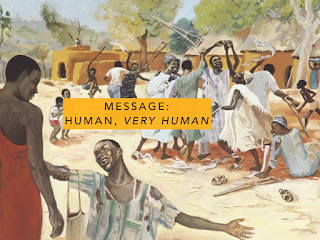Sermon: Like A Wet Nurse, A Nurse Tree, A Nurse Log, ... (1 Thessalonians 2:1-8) Oct 29, 2017

1 Thessalonians 2:1-8 A nurse log. Credit: Phil Simonson The Background to the Story... Judy’s going to read the letter, and as we listen to it, I invite you to reflect on what we can learn from Paul about how we persevere with our faith, belief and truth when they meet with opposition. What images and metaphors might be helpful to understand who we are and what we can be, first, when our belief and neighbourly practice are challenged, second, when we need to become a better community by learning from these experiences, third, when we need to challenge those who don’t see the value of our faith, truth and hope. Message Like a wet nurse, like a nurse tree, like a nurse log, like a ,,, There are times when our beliefs or plans meet the opposition of others. There are also those times when we need to oppose the plans of others because we see in them something to improve, or something to change, something to disagree with. In the dictionary, oppos


